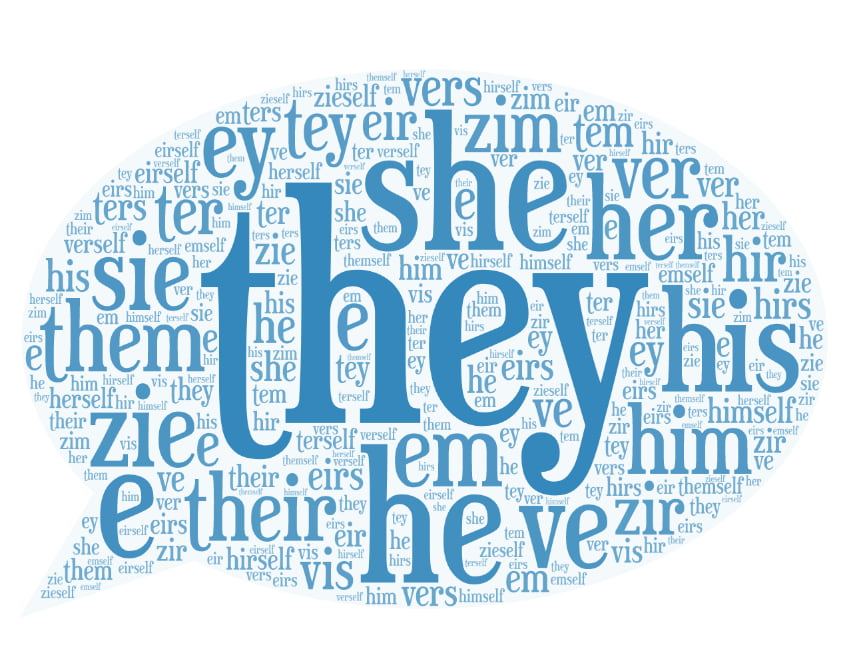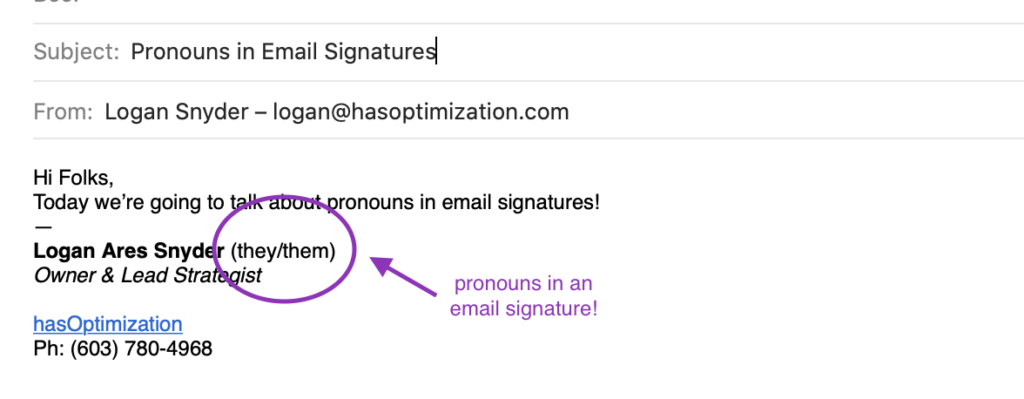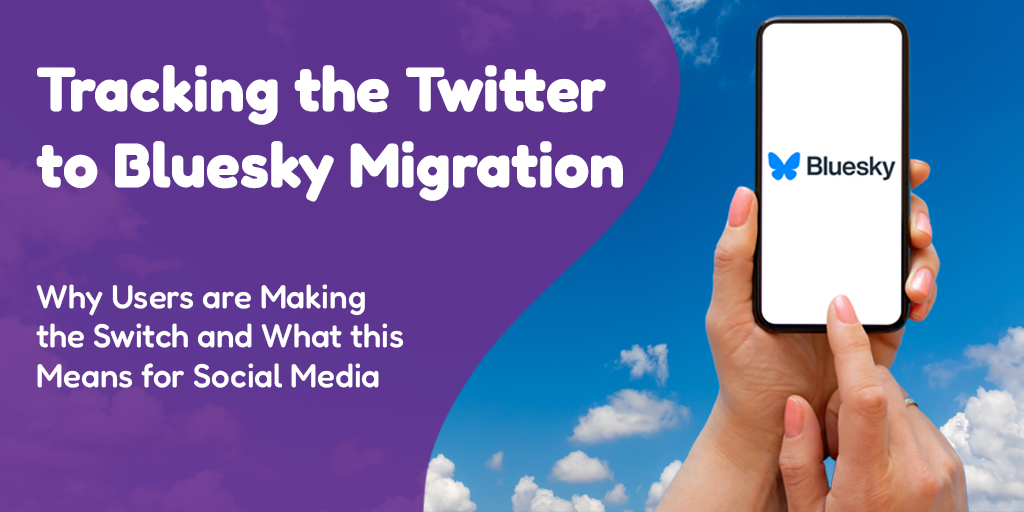 Posted by Logan Snyder on November 18th, 2019
Posted by Logan Snyder on November 18th, 2019If you communicate with a hasOptimization staff member regularly, you may have noticed that we recently added pronouns to all of our email signatures. You may be wondering why that is…and don’t worry, I’ll get there. First, though, I’d like to give you some background.

What IS a pronoun, anyways?
A pronoun is a word which stands in for a noun. It would be a little odd if you used someone’s name every single time you referred to them: “Jennifer has gone to Jennifer’s car to get Jennifer’s jacket because Jennifer is cold”. Strange, huh? “Jennifer has gone to her car to get her jacket because she is cold” seems much more natural to the average English speaker. “She” and “her” are pronouns, standing in for Jennifer in that second example sentence. They (a word which here is standing in for the noun “pronouns”!) make our language flow more smoothly and be less repetitious.
Why are pronouns important and why are some people so upset about them?
Here’s the deal. Calling someone by a pronoun that is not theirs is just as bad as calling them by a name that is not theirs. It’s careless, and repeated it becomes rude. It makes the person you’re speaking about feel not-known, not-seen. If that happens to someone constantly, every day, it wears them down. It’s tiring. It’s painful. Don’t do that to people!
So why’d hasOptimization put pronouns in our email signatures?
Well, half of the hasOptimization core team uses an uncommon pronoun: “they”. Now, singular “they” (“they” being used to reference a single person) isn’t actually all that uncommon: I used it several times in the above paragraph and you probably didn’t even notice. What’s uncommon is using singular “they” for a KNOWN person, but even that is becoming more common. That said, it’s still very common for people who do not know us to assume a binary (he or she) pronoun, and, well, see the above paragraph for why that’s a problem.
However, getting people to use Morgan’s and my pronouns correctly is actually only part of the reason that we added pronouns to our email signatures. Another factor is that including pronouns in email signatures is a small way of signaling that we are aware of pronouns as an issue of importance for people, and we care about getting that right. A now-client, when she first made contact with us via email, gushed about how happy it made her to see pronouns in our signatures, because it was a sign to her that we were “the right people”, people who respect the diversity of gender and care about getting pronouns correct. We’re a pretty queer team, and we’re invested in being a LGBTQIA-friendly marketing company. Pronouns in email signatures are just one way we can demonstrate that to the world.
“…the fact that you have your preferred pronoun on your signature makes me overjoyed.”
–A recent proto-client
So, should I add pronouns to MY email signature?
I’d love to just say “yes” here, because I believe that it’s a tiny effort with a lot of positives and no real negatives. If you’re talking your personal email signature, absolutely! If you’re talking about putting pronouns in your work email signature, though, you may want to check with your supervisors–and if the reaction is positive, consider pushing to have it be recommended for everyone (I’m not in favor of requiring pronouns in signatures, for reasons that would be a whole other post!).




I love this. A while back I added pronouns to my email signature and all my social media sites. Thank you for the explanation, I know a lot of people ask and your post is a great place I can send them for education. 🙂
We’re glad we could help!